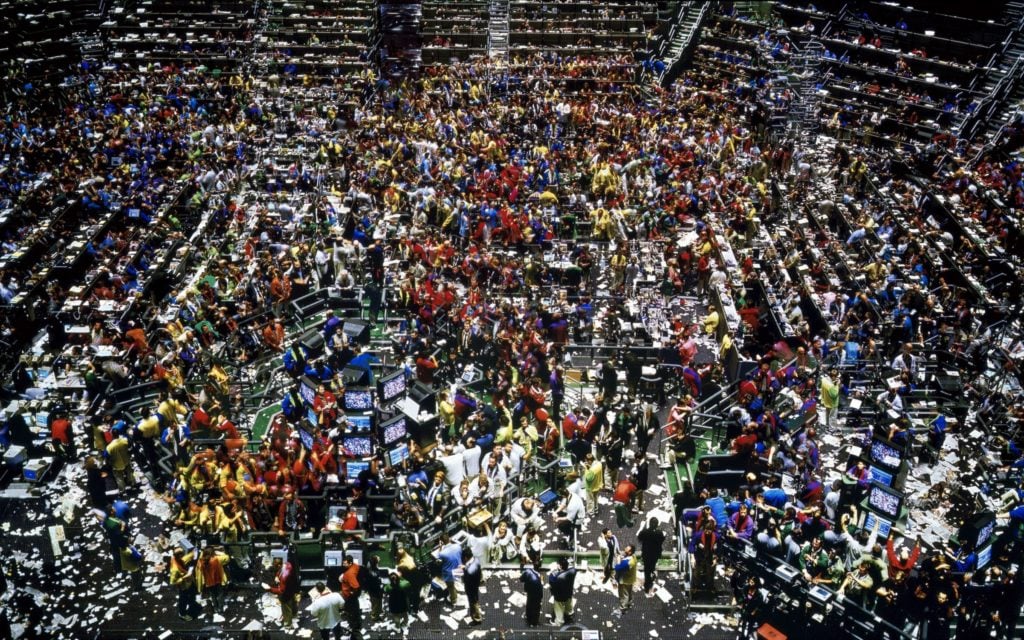For more than a decade, their massive images of stock exchanges, Brutalist facades, and opera houses were a must-have for top collectors. Photographs by members of the Düsseldorf School—a group of German photographers that includes Andreas Gursky, Thomas Struth, and Thomas Ruff—were snapped up by the likes of mega-collector Eli Broad, actor Leonardo DiCaprio, and gas-company billionaire Leonid Mikhelson. One London hedge fund reportedly purchased five of Gursky’s stock-exchange photos to decorate its trading floor.
These days, however, the supersize works are considerably less in demand. Back in 2011, a single print by Andreas Gursky sold for more than the cost of every contemporary German photographer’s work brought in at auction in the first half of 2020—combined.
Prices Cratering
In 2011, work by contemporary German photographers generated a combined $21 million at auction. Last year, that total fell by almost 50 percent, to $10.6 million, according to the Artnet Price Database. In the first half of this year, sales by the group (defined as German photographers born after 1945) shrank even more dramatically, bringing in just $3.9 million at auction.
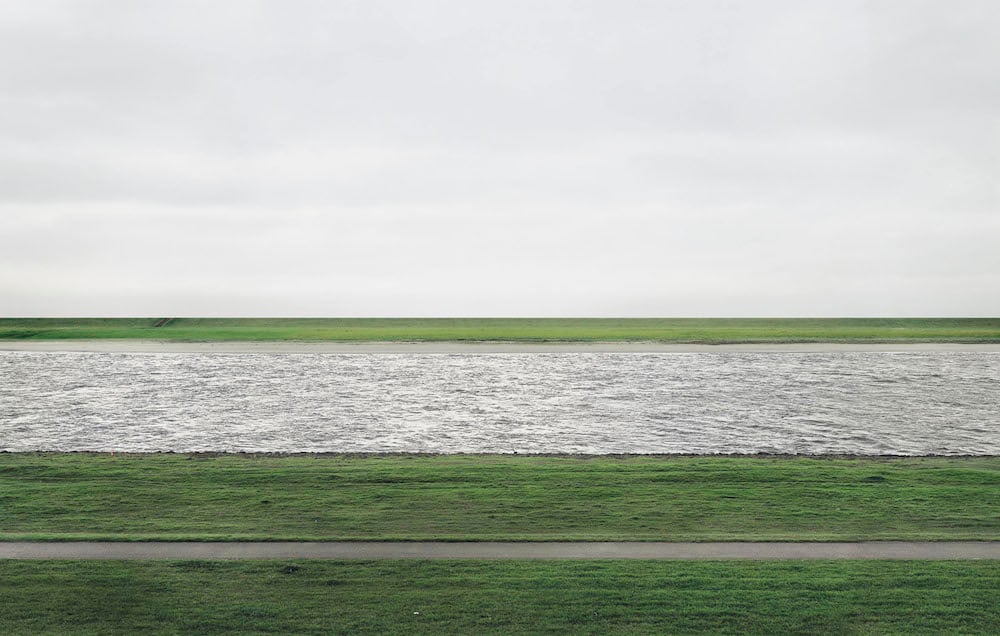
Andreas Gursky, Rhein II (1999). Image courtesy Christie’s.
The Düsseldorf School artists studied under influential photography duo Bernd and Hilla Becher for years before putting their individual conceptual spins on the medium and (literally) blowing it up with the help of digital technology. In the late aughts and early 2010s, the market couldn’t get enough.
“All of these artists appeared around the same time,” the art advisor Todd Levin tells Artnet News. “Advancements in printing techniques allowed the creation of photographs on a much larger, cinematic scale. It provided a new way of thinking about photography and what it could be.”
Of the three best-known members of the school, Gursky is by far the most expensive—and has also seen his auction prices tumble most dramatically. In 2011, his average work sold at auction for almost $600,000. This year, that figure tumbled more than 85 percent, to just $84,655.
Nearly nine years ago, Rhein II (1999), a wide-angled view of the riverbank, realized $4.3 million, setting the record for the most expensive photograph ever sold at auction. (The buyer for that work, it should be noted, was the now-jailed art dealer Inigo Philbrick.)
Gursky’s second-highest auction price, $3.3 million, was set in 2007 for his oft-reproduced image of a 99-cent store. But the artist—whose work broke the $1 million mark at auction at least once a year from 2006 to 2017 (with the exception of post-crash 2009)—hasn’t passed the seven-figure threshold in three years.
Ruff, who is known for his oversize passport-style portraits of young people, has experienced a similar, though less dramatic, trajectory, with his average auction price falling 45 percent between 2011 ($28,035) and the first half of 2020 ($15,978). Struth, celebrated for his images of tourists dwarfed by cultural wonders, saw his average price rise just over eight percent during this same period, while his total auction sales fell 52 percent.
What’s Going On?
There is no shortage of critical acclaim, exposure, or scholarly attention for any of these artists. Berlin and Los Angeles gallery Sprüth Magers is presenting a show of Gursky’s first new work in nearly three years in Germany, in addition to an online show titled “Space Is Time” (through November 14). In December, the German photographer will be the subject of a major exhibition at the Museum der bildenden Künste in Leipzig.
Struth, meanwhile, had a show of roughly 130 works at the Guggenheim Bilbao in Spain at the start of 2019, and Ruff was the subject of a solo exhibition at London’s Whitechapel Gallery in 2017. A solo presentation of 30 years’ worth of his work is on view at K20 Kunstsammlung Nordrhein-Westfalen, while another one-man show is due to open at the National Taiwan Museum of Fine Arts in 2021.

Thomas Ruff, Jpeg pt01 (2006). Image courtesy Christie’s.
How can three artists with impeccable collectors, museum presence, and curatorial attention fall into such a rut on the auction block? Experts attribute the dynamic to a combination of factors, starting with oversupply.
As more and more work surfaced on the market, demand was eventually met—and buyers became picky. Most top photographers might put out eight to 12 images a year, typically in editions of six to 10, which means a ballooning supply year over year. The largest, most sought-after works by the Düsseldorf School artists come in editions of four to eight. Still, Todd Levin says, “after serious private and institutional collectors have accessed those works they deem crucial, the market tilts towards oversupply.”
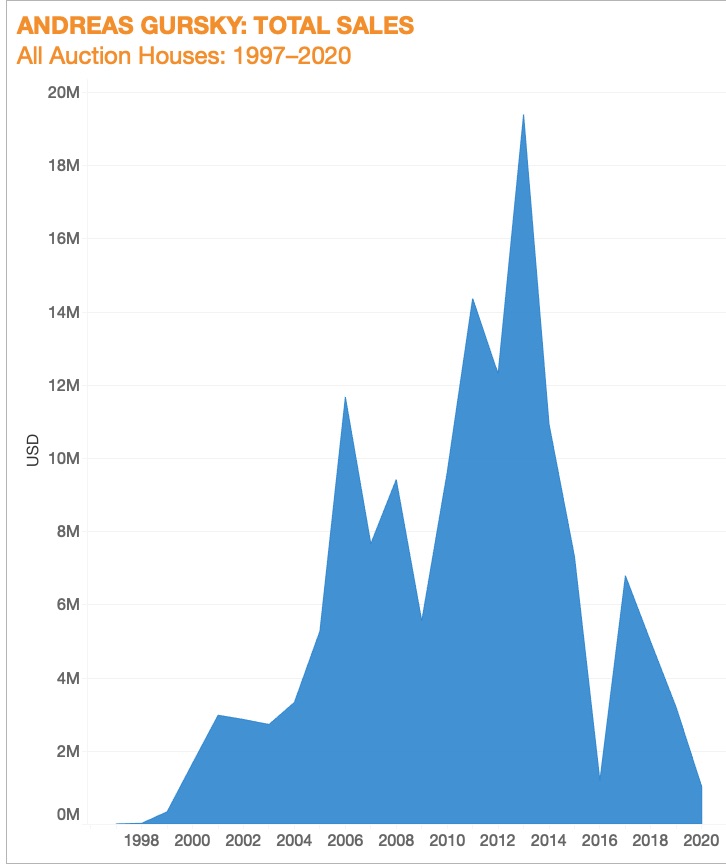
Darius Himes, international head of photographs at Christie’s, says the buoyant market for these photographers in the early 2010s was the result of a perfect storm.
“The top prices for those relatively few works were achieved in the marketplace at a moment when the attention by major museum exhibitions coincided with [the artists’] entrance into the auction market within contemporary art departments” as opposed to photography auctions, Himes notes. Presenting their work in a contemporary art context was important at a time when top collectors were already accustomed to shelling out far more than $1 million for a blue-chip trophy.
As for Rhein II, the record-setting Gursky photograph, many of its editions are in institutions, driving up the value of the example that appeared on the market. “Though photographic works are often editioned, the supply is not limitless and therefore a ‘market’ for an artist can seemingly go quiet after a flurry of public visibility simply because the supply wanes,” Himes says.
Bigger Art, Bigger Problems
Another huge factor, the experts point out, is practical. These works are big. “The sheer scale is a tremendous limiting factor that, at first, people were willing to put up with because they were sincerely interested in the work,” Levin says. Unlike a painting, these images cannot be rolled or compacted for moving.
“Large-scale photography, when framed or backed with some of the latest aluminum or polymer backings, are not forgiving like canvases,” says Jonathan Schwartz, president of storage and shipping company Atelier 4.
Tales abound of the incredible logistical challenges that come with moving these works from trucks to hallways to Park Avenue apartment buildings. There have been instances, Levin recalls, of art handlers being unable to fit them into elevators, opting instead to slide them on top for the ride.
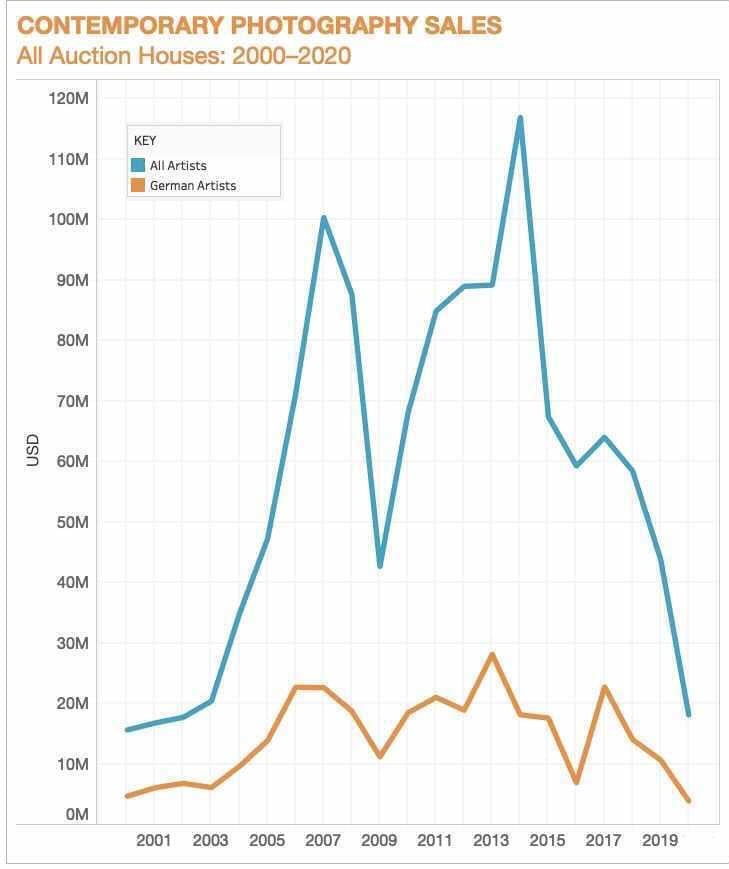
Source: Artnet Analytics
A Tale of Two Markets?
Gursky and Ruff’s dealers, Monika Sprüth and Philomene Magers, caution that auction prices are just one part of the picture. A representative of Marian Goodman Gallery, which represents Thomas Struth, says the gallery does not comment on market-related issues, though sources say his works range in price on the primary market from $25,000 for a small example to $250,000 for a museum-quality piece.
“The interest in Andreas’ works has been very steady over the years,” Sprüth and Magers say of Gursky, with whom they have worked since 1993. Since he only creates a few works per year, “the demand is significantly higher than the supply.”
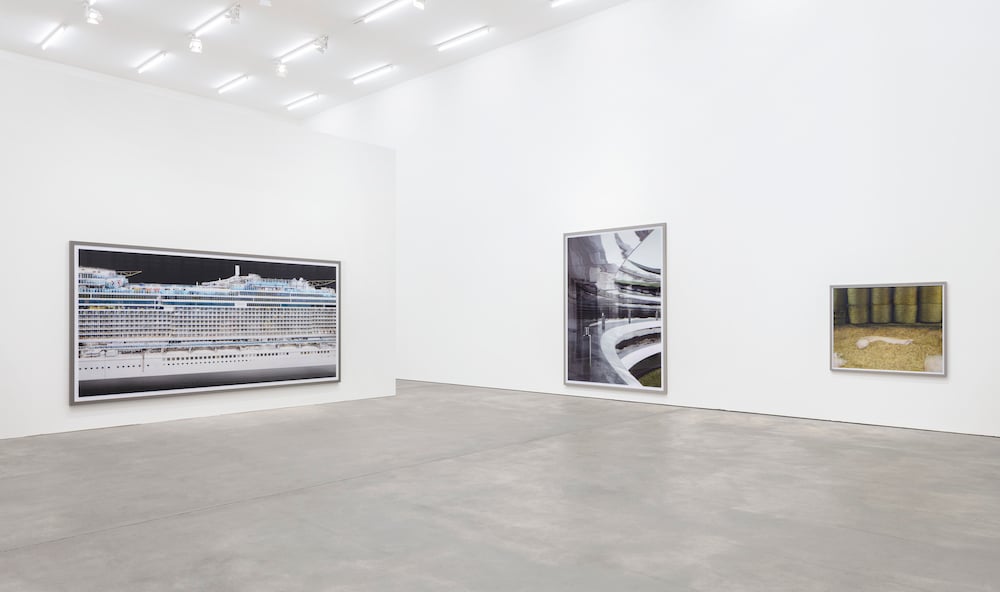
Installation of Andreas Gursky’s current show at Sprüth Magers Gallery in Berlin. Image courtesy Sprüth Magers.
In addition to the allure of famous images like Rhein II, 99 Cent II, and the various stock exchanges, Gursky’s new work depicts a cruise ship under construction, an image that has “gained an extra level of meaning and significance due to the current global situation,” the gallerists say. New works by the artist are priced at up to €1 million ($1.2 million).
Meanwhile, Ruff’s new series is priced at €45,000 ($52,000) for flower.s (2018), produced in an edition of six, and €85,000 ($99,900) for tableau chinois (2019), in an edition of four. Ruff’s auction record is lower than his two peers: $240,000 for Jpeg pt01 (2006), sold at Christie’s in 2017.
Sprüth Magers has been working with Ruff since 2016 and the dealers say they have seen increased demand for the artist’s “Stars,” “Substrates,” and “Photograms” series in particular over the past few years.
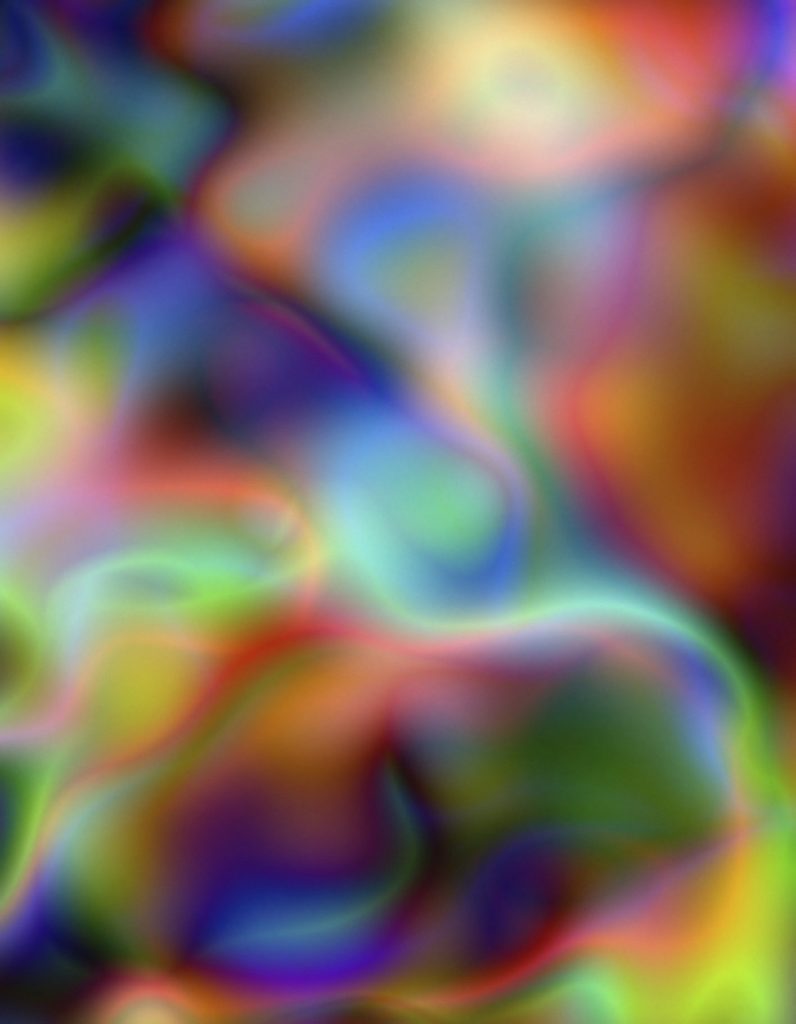
Thomas Ruff, Substrat 32II (2007). Image courtesy Sprüth Magers.
Phillips head of photographs Sarah Krueger concedes that while the primary market for these artists is solid, the secondary market “is quite selective, so you won’t necessarily see a great deal of these at auction in any one season.” When they do appear, she says, “and are priced to achieve an accurate representation of the market, collectors remain committed to bidding and are willing to overcome any logistical issues that arise when purchasing works of such monumental scale.”
She notes that in 2016, Gursky’s Athens (1995), a work that is over 12 feet wide, sold for $400,000 against a low estimate of $250,000. Another work by the artist, São Paulo, Sé (2002), offered at Phillips on October 14 with an estimate of $400,000 to $600,000, failed to sell online, but Phillips noted it may sell privately.
In a 2018 New York Times profile, Gursky seemed more than comfortable with the arc of his career. “Asked if his fame and fortune caused him discomfort, Mr. Gursky laughed. Money had, of course, changed his life, he said, because he could afford to travel wherever he wanted.”
“I’m just interested in making images,” the photographer said.
Follow Artnet News on Facebook:
Want to stay ahead of the art world? Subscribe to our newsletter to get the breaking news, eye-opening interviews, and incisive critical takes that drive the conversation forward.
